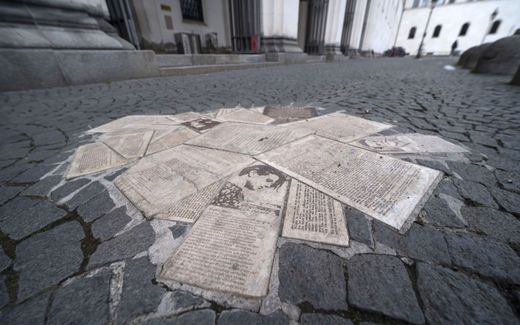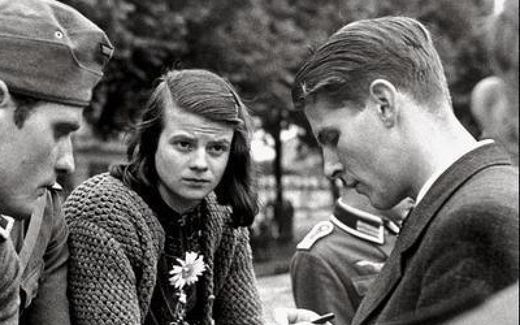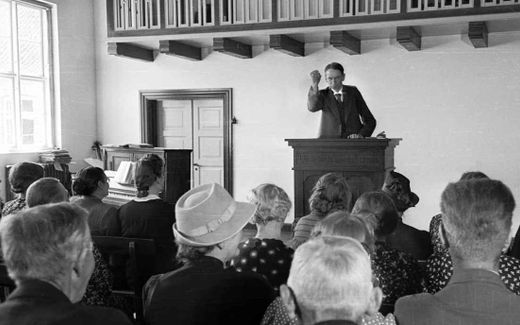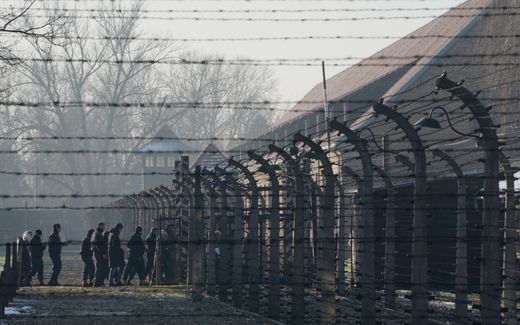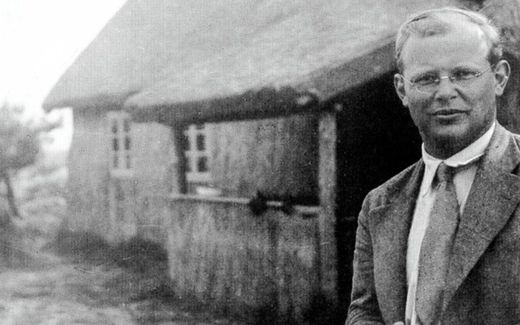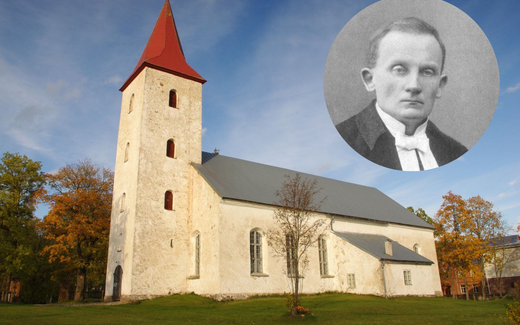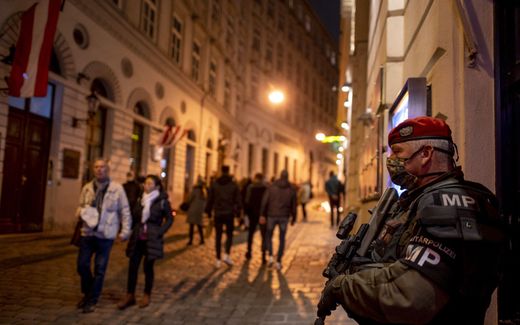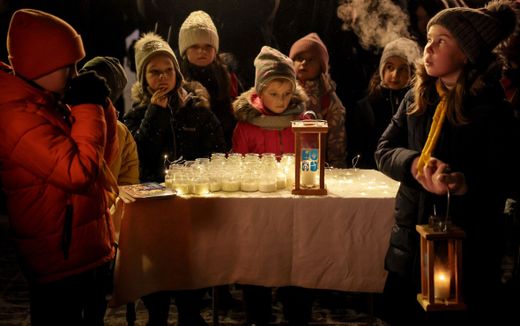Were the churches supporters or opponents of Hitler?
10-09-2024
Central Europe
René Zeeman, RD

The exhibition "And forgive us our trespasses?" in the Dalheim monastery. Photo: LWL/Ansgar Hoffmann
Central Europe
National Socialism is the black page in German history. But what was the position of the churches and their members during that time? Were they victims or perpetrators?
The exhibition "And forgive us our trespasses?" in the beautiful Dalheim monastery highlights the relationship between the various denominations and National Socialism. The two rooms are deliberately sparsely lit to underline that this is a dark chapter of the past. On display are more than 200 objects from museums, libraries and private collections: photographs, diaries, charters and a previously unreleased letter to Pope Pius XII from the Vatican archives.
The subject is so vast and complex that the exhibition is divided into ten themes that highlight different aspects of the subject. Each theme is introduced by a question, such as "How did national socialists relate to Christianity?", "Did Protestant Germany support national socialism?" and "Was the Roman Catholic Church opponent or partner of national socialism?"
Visitors are presented with the historical facts of the eventful era. In the process, they are given the current state of science on the various topics and encouraged to reflect on each question.
Why an exhibition on this theme, almost eighty years after the end of World War II?
Carolin Mischer, one of the curators of the special exhibition at the German monastery, doesn't have to think about the question during a guided tour. "World War II has not yet been processed. The churches and monasteries are still not over the war. Immediately after the war, they distanced themselves from National Socialism. For a long time, the idea prevailed that the churches were only victims and opponents of the regime. Only in the 1960s did they come to realise their mistakes. The furthest Pope John Paul II went, in the year 2000, at the Wailing Wall in Jerusalem, prayed to God for forgiveness and admitted that Christians were partly to blame for the death of the Jews."
The exhibition will run until 18 May 2025. "Next year is the 80th anniversary of the end of World War II, and we were keen to come up with an exhibition before then", Mischer says. She adds that the organisation is mainly targeting secondary school students and adults. She has no complaints about interest.
The title of the exhibition, "And forgive us our trespasses?" a phrase from the Lord's Prayer, ends with a question mark. Why?
"With the question, we want to encourage visitors to form a picture and answer the question for themselves."
The exhibition begins with the situation in Germany before 1933. It is the time of the Weimar Republic, which emerged as Germany's first parliamentary democracy in 1918/1919. The Treaty of Versailles, with its bizarre demands on Germany, caused dissatisfaction. On top of that, the stock markets collapsed in 1929, and an economic crisis ensued, resulting in massive unemployment. The events created the ideal breeding ground for radical parties like Adolf Hitler's NSDAP.
On an election poster in the hall, Hitler presents himself as "our last hope". Mischer: "Hitler presented himself as a religious saviour." She points to a page with statistics on the 1932 election. What do the figures reflect? Protestants, in particular, voted for Hitler. Mischer offers the explanation: "The Roman Catholics had their own centrist party, to which they remained loyal in the majority. The Protestants did not have their own party."
The exhibition not only raises the question of how the churches behaved towards Hitler but also looks at the attitude of the National Socialists. Mischer: "We do not have a one-sided picture here either." She points to a postcard that reads in Gothic script: "We hold the forces of Christianity as indispensable for the moral resurrection of the German people." "You see, Hitler stated outwardly at the beginning of his reign that he needed the believers. He said he would respect the churches."
Indoors, Hitler proclaimed that he would eradicate Christianity in Germany root and branch because "for the German people the decisive thing is whether they possess the Judeo-Christian faith with its weak morality of pity or a strong heroic faith in god in nature, in god in their own people, in god in their own fate, in their own blood". Hitler continued, "A German church, a German Christianity is nonsense. One is either Christian or German. One cannot be both."
In school, children learned that "just as Jesus freed people from sin and hell, Hitler saved the German people from destruction. Jesus and Hitler were persecuted, but while Jesus was crucified, Hitler was elevated to chancellor. The apostles completed the work of their Master. We hope Hitler himself will complete his work. Jesus built for heaven, Hitler for German earth."
Mischer stresses that Hitler showed his true face in public during the war. "Then he said that we will destroy the churches after the war."
Bekennende Kirche
Within the NSDAP, there were calls to replace Christianity with a Germanic pseudo-religion. Mischer points to a so-called "Julleuchter", a candlestick which was used among SS families. "The husband of the family lit it at the winter solstice festival that was supposed to replace Christmas. That never worked out, by the way. The Christians stuck to their customs."
Mischer says that within the Protestant churches in Germany, there also arose the movement of the German Christians, which promoted an amalgamation of Christianity and national socialism. "It was they who said that Jesus was not a Jew, but an Aryan Galilean", she says.
Mischer points to an eight-square-metre tapestry that hung in the church in Rotenburg an der Fulda, demonstrating the merging of Nazis and church. For a year, the church's women's association worked with the NS-Frauenschaft, the NSDAP's women's organisation, on the tapestry showing boys from the Hitlerjugend and girls from the Bund Deutscher Mädel marching into the church. "Pay particular attention to the text on the edge of the tapestry", says Mischer. "What is neatly embroidered there? The Lord's Prayer."
Many Protestant pastors joined the NSDAP, Mischer said. "For Protestants, it is a black page in their history. At the same time, I want to point out that there was also a counter-movement of Protestant Germans. It is called the Bekennende Kirche and arose when Jews converted to Christianity had to give up their offices in the churches. You cannot call the Bekennende Kirche a resistance movement, although it is true that many ministers of this movement joined the resistance."
The Roman Catholic Church offered more resistance than the Protestant churches?
Mischer: "The section of the exhibition devoted to the Roman Catholic Church asks the question, "Opponent or partner of National Socialism?" Initially, the German bishops were dismissive of National Socialism. In 1930, they let it be known in a statement that a Christian could not be a member of the NSDAP. Their attitude changed when Hitler came to power in 1933, and in his government statement, he said he would respect the churches. Thereupon, the bishops distanced themselves from their statement."
In July 1933, Hitler concluded a treaty with the Vatican, known as the Reich Concordat. The Roman Catholic Church would retain some of its autonomy, and the Nazis would leave the church untouched. Hitler celebrated the agreement as a success, as it was his government's first treaty with a state.
The German government soon broke the agreement. Mischer: "Roman Catholic associations and newspapers were banned. The bishops appealed to Pius XII for help in a letter." She points to an epistle. "Thereupon, the pope wrote a letter of protest, which was multiplied by the bishops and read from the pulpits. Hitler subsequently closed down the printing plants, and a wave of arrests among clergy followed."
Resistance
Of course, Pope Pius XII passes by in the exhibition: did he remain silent? "The pope himself said he did not", says Mischer. "At the same time, he argued that he had to remain neutral and, therefore, had to be careful what he said. Pius XII knew about the persecution of Jews. The Dutch bishops protested against it in a letter in 1942. Subsequently, numerous Christians of Jewish origin were rounded up. They were detained in Camp Amersfoort and eventually killed. But that protest is unique. Nothing like it has occurred anywhere. The consequences, on the other hand, were horrific. That is the argument the Roman Catholic Church cites when asked why it did not do more."
Open resistance from both major Christian churches is almost non-existent. Resistance comes from a few. Some of them get due attention at the end of the exhibition: Sophie and Hans Scholl, Dietrich Bonhoeffer and the priest Maximilian Kolbe, who died for a fellow prisoner. They were the exceptions.
At the exit of the exhibition, questions are projected on a wall. The main one: What would you have done?
Based on "Und vergib uns unsere Schuld?" The exhibition at Dalheim Monastery runs until 18 May 2025. For more information, click here.
This article was translated by CNE.news and published by the Dutch daily Reformatorisch Dagblad on August 22, 2024
Related Articles

